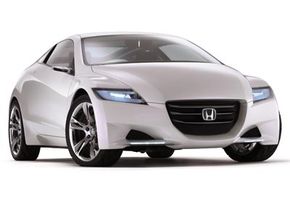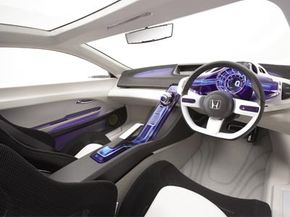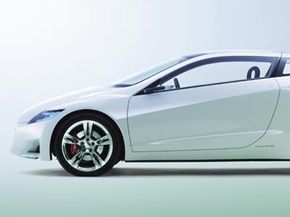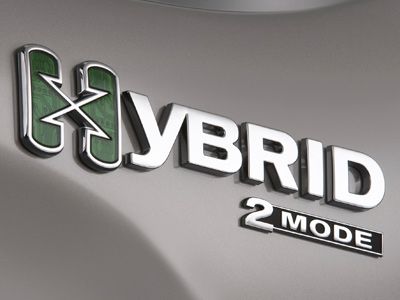One of the biggest challenges automakers are having with the current push for more hybrid car technology has a lot to do with perception. Certainly one image most auto companies want to convey to their audience is how "green" a hybrid car is. Most people understand that the point of hybrids is to place an emphasis on better fuel efficiency. By switching between an electric motor and a gasoline engine, hybrid cars stretch out the mileage achieved by each tank of fuel -- the less fuel we consume over the lifetime of a car, the less of an impact we have on the environment around us.
But a more difficult issue automakers are dealing with is that of the image of hybrid cars as slow or lacking power. Gasoline engines generally provide a good deal of horsepower and a fair amount of torque, and therefore they accelerate quickly. But because the gasoline engines in most hybrid cars are typically smaller, they don't produce quite as much acceleration. Some drivers -- especially the ones more acquainted with sportier engines -- might not like this aspect and may tend to shy away from hybrid technology, sticking solely to their fossil fuel-powered cars.
Advertisement
But some car makers are thinking of ways to introduce much faster hybrids, and both the interior and exterior of the newer models might start looking and driving a whole lot better. One such model is the Honda CR-Z, which on the outside is quite a departure from previous Honda models like the Civic Hybrid. Honda's focus with the new car looks to be less about the fact that it's a hybrid and more about its sporty nature. CR-Z stands for "Compact Renaissance Zero," hinting not just at the car's small size but also at a brand new start in fundamentals and design.
The Honda CR-Z began as a concept and wasn't slated for production until as late as 2011 or even 2012. However, Honda has moved that date up -- most likely due to changing fuel standards and more demand for fuel-efficient technology -- so now the hybrid remains set for a late 2010 release.
Advertisement




